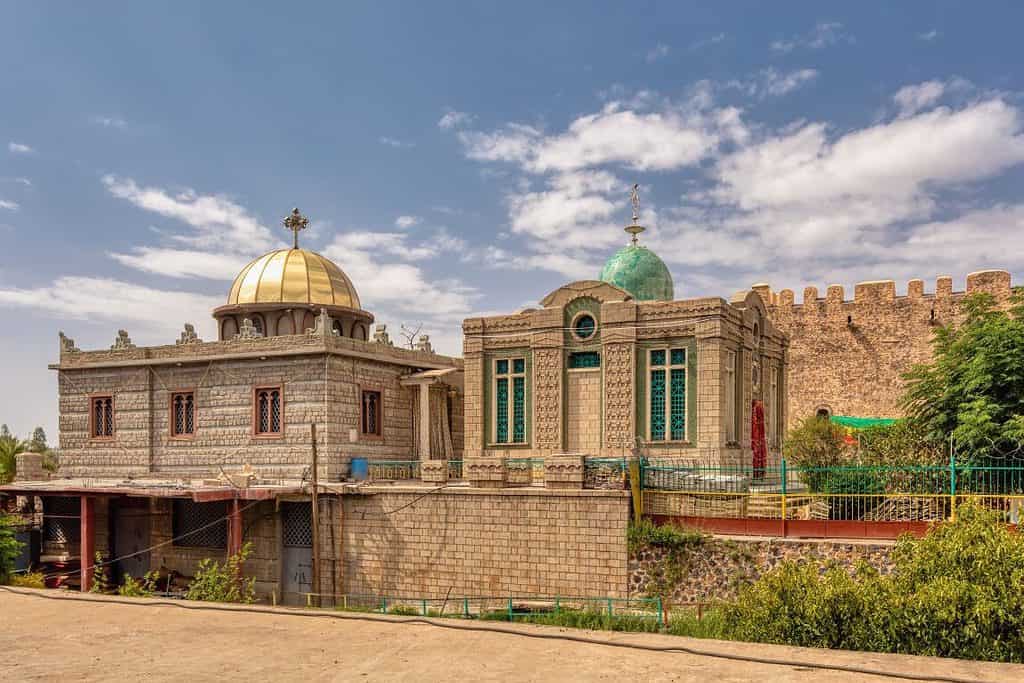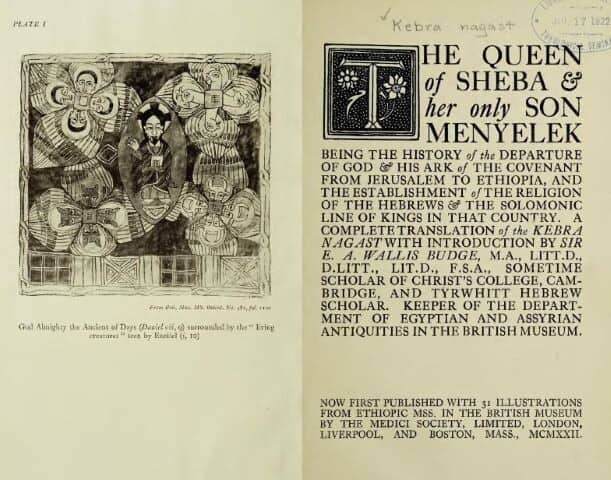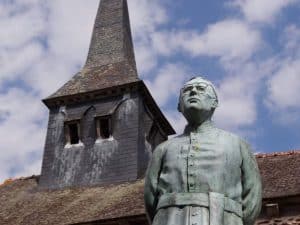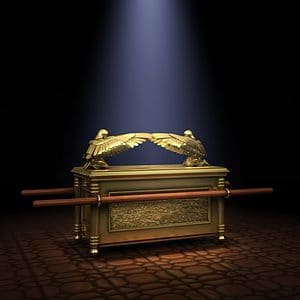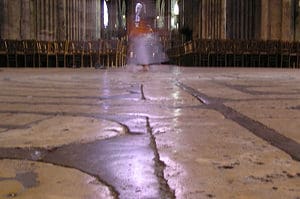The Ark of the Covenant could very well be in Ethiopia. It is supposedly kept at Axum. The relic was maintained for centuries in the Church of Mary of Zion, where Emperor Iyasu the Great is said to have seen it and talked to it in 1691.
Currently, it is located at the Chapel of the Tablet, which the last emperor Haile Selassie had constructed next to the Church of Mary of Zion.

What is the Ark of the Covenant
If you would like to update your knowledge about the Ark of the Covenant, you can watch the video below.
Is the Ark of the Covenant in Ethiopia?
It is very possible the Ark of the Covenant is kept in Ethiopia, but nobody knows for sure. It is guarded by a virgin monk. He serves the Ark until his death, at which time he picks a successor. No one else, not even Axum’s high priest, may approach it.
The journey of the ark according to the Kebra Nagast
This is the story of the Ark of the Covenant according to the Kebra Nagast. The Kebra Nagast is at least 700 years old in its current form. Many Ethiopian Christians regard it as a historically reliable work. It is said to include the ancestry of the Solomonic dynasty.
Ethiopians believe that the chronicles were transcribed from a Coptic text from the fourth century that was based on a far older story:
During Solomon’s reign, “the Queen of Sheba, hearing of his greatness, came to test him with sophisticated inquiries” (1 Kings 10:1). The Bible depicts Sheba’s reaction to Solomon’s intellect, grandeur, and wealth of food as “breathless.”.
Sheba, according to the Kebra Nagast, seduced Solomon and bore him a son named Menelik.

Menelik was raised in Jerusalem by his father. When he reached adulthood, he left his father to rejoin his mother in Ethiopia. He secretly took the ark of the covenant with him. Menelik reasoned that since the mighty Ark of the Covenant had not killed him, it must have been God’s will that the ark remained with him. Therefore, he brought the ark of the covenant to Axum.
Ethiopian Orthodox Christians, who belong to one of the world’s oldest Christian denominations, worship the Ark of the Covenant. They have a tradition that no other Christian church has: Every Ethiopian Orthodox church has a tabot, or mini-ark, which is a small reproduction of the ark of the Covenant.
It is blessed by the Patriarch whenever a new church is built and stored in a tiny tabernacle, in the Holy of Holies, which is solely accessible to the priest.
This means that every Orthodox church in Ethiopia owns a miniature ark, but the real Ark is supposedly located in the church in Axum.
Download a free version of the Kebra Nagast.
The journey of the ark according to Graham Hancock
One of the researchers in the ark of the Covenant and the Kebra Nagast is Graham Hancock, who wrote an intriguing book about the journey of the ark.
The first chapters of Hancock’s book are dedicated to the Kebra Nagast. He shows that the story is depicted in the portal of Chartres Cathedral. He sees a relationship between the manuscript and the tales of the grail. The construction of Chartres cathedral and the grail narratives, as well as the Kebra Nagast, date from the 13th/14th century.
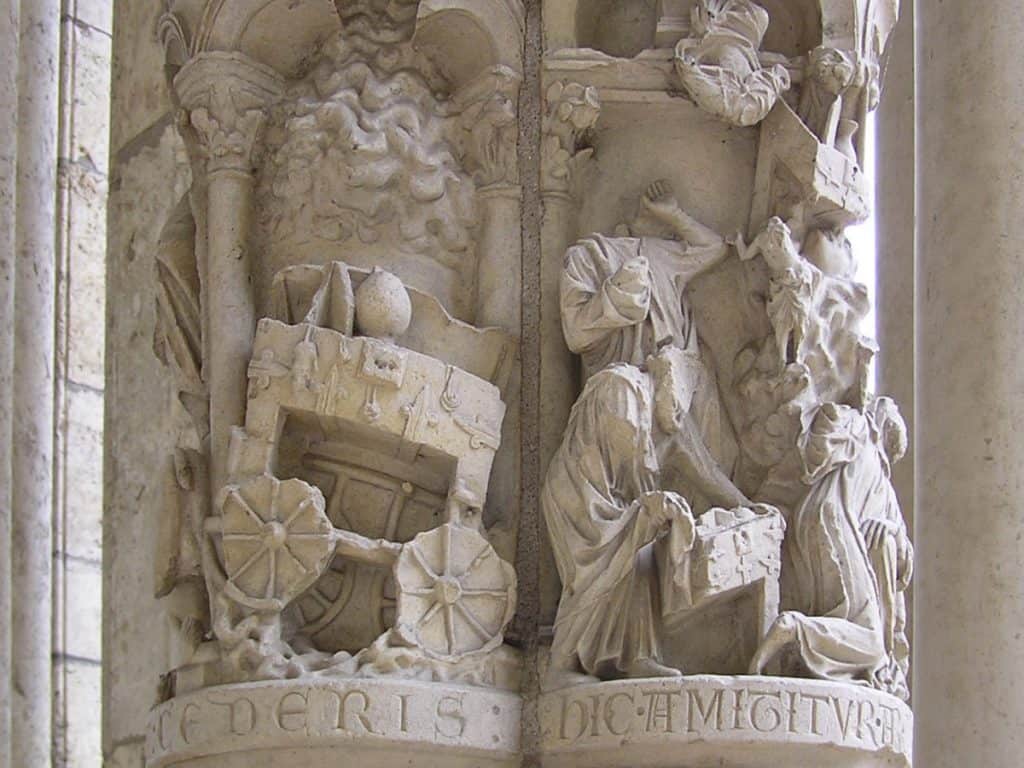
Hancock concluded that the story of the Kebra Nagast was more myth than reality. He noted there was something wrong with the timeline and constructed a different story.
According to Hancock, priests of the temple of Jerusalem, took the ark from Solomon’s Temple at some point around 650 BC, during the reign of the pagan King Manasseh. They conveyed it to the island of Elephantine in the Nile. It stayed there for approximately 200 years in a temple that was designed specifically for the ark, being a replica of the Jerusalem temple.
It was relocated approximately 470 BC to Ethiopia, where it was preserved on the Jewish island of Tana Qirqos for almost 800 years. Tana Qirgos was the center of a flourishing Jewish community.

It ultimately came in the possession of the Ethiopian Orthodox Church in the 5th century, who brought it to their capital city of Axum, where it is said to have remained in the Church of Our Lady Mary of Zion until it was moved to the Chapel of the Tablet.
Hancock described the ark’s journey in detail in his book The Sign and the Seal: The Quest for the Lost Ark of the Covenant. I regret that Hancock spun a complicated web of possible events around the Ark. He involves the Knights Templar in his story, who are looking for the grail and hoped to find it in Ethiopia.
In fact, according to Hancock, the Ethiopians were so afraid that the Templars would take the ark that they persuaded Pope Clement V to persecute the Templars.
Although this part of the book might not be fiction, it does not diminish the fact that “The Sign and the Seal” is a fascinating and well documented book to read.
I read it back in the 1990s when I became interested in the story of Rennes-le-Château.

The Kings of Ethiopia and the Kebra Nagast
Kebra Nagast means “The Glory of the King”. It is a significant manuscript because it tells the story of what happened to the ark of the covenant. But for Ethiopian royalty, the manuscript was even more important.
Emperor Haile Salassi was considered a descended from Menelik and was thus related to King Solomon and his father, King David. The significance of this Solomonic ancestry cannot be understated; it was designated “a job requirement” for imperial successors in the previous Ethiopian constitution, enacted in 1958. (Haile Selassie, the constitution’s author, considered himself the 225th direct descendant of the Israelite monarch.)

The full title of Salassi was very impressive: His Imperial Majesty, Haile Selassie I, Heir Son from the seed of Solomon, the All Conquering Lion of the tribe of Jud(e)a, King of Kings, Lord of Lords, Father of Africans from the most beloved Ethiopia, the motherland of sons and daughters in diaspora.
Sallasi was the last emperor of Ethiopia, but was not very popular in his country. Soldiers conducted a coup and imprisoned him in 1974. Lieutenant General Aman Andom succeeded him. When Salassi died in August 1975, the official cause of death was a surgical complication. Many people are convinced he had been murdered.
In 1992 his body was recovered and in November 2000, the Ethiopian Orthodox Church granted him an imperial funeral in Addis Ababa Cathedral.
Can you visit the Ark of the Covenant in Ethiopia?
Even if the Ark of the Covenant is really in Ethiopia, it is impossible to visit. However, during different festivals in Ethiopia, you can see a copy of the “Ark of the Covenant” being carried by priests.


